History of the world`s first drifting polar station
For decades thousands of North explorers have been trying to get to the North Pole, to be the first to reach its new latitudes and to hoist their country’s flag by any means, marking the victory of their nation over nature’s severity.
The development of aviation in the beginning of the 20th century, created totally new conditions for reaching the North Pole. Flights of R. Amundsen and R. Berd, dirigibles “Norway” and “Italy” demonstrated this. But these expeditions were not significant enough for scientific research. The real conquest of this region began after the successful finish of the first air high-latitude Soviet expedition and landing on a drifting block of ice of the heroic four under the command of I.D. Papanin in 1937.
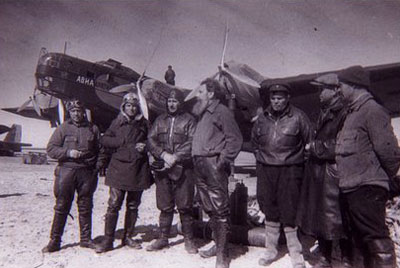
O.Y. Schmidt was in charge of the air part of the expedition, taking it to the North Pole. Ivan Dmitrievich was responsible for its water part and winter stay at the “SP-1” drifting station. It was planned to land the expedition in the North Pole region for a year, during which it would be possible to collect data on a wide range of parameters of atmospheric conditions, meteorology, geophysics and hydrobiology.
The flight of five legs started in Moscow on March 22nd and was over on May 21st, 1937. At 11.35 am the flagplane under the command of M.V. Vodolyanov landed on the ice, having flown 20 kilometers beyond the North Pole. And the last plane landed only on June 5th, the conditions of flight and landing were extremely difficult. On June 6th the flag of the USSR was hoisted at the North Pole and the planes flew back.
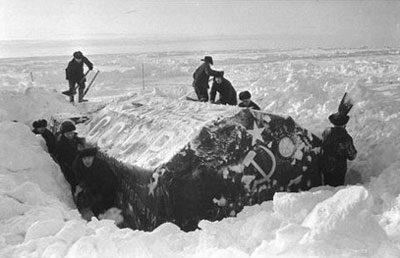
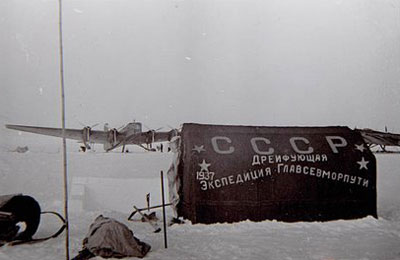
Four courageous explorers were left on the ice with a tent to live in, two radio stations, connected with aerials, workshop, meteorological cabin, theodolite for measuring the height of the sun and storehouses made of ice. The expedition team included: P.P. Shirshov, hydrobiologist, glaciologist; E.K. Fyodorov, meteorologist, geophysicist; E.T. Krenrel, radio operator and I.D. Papanin, Head of the station. Ahead there were months of exhausting work and hard living conditions. But it was a time of mass heroism, high spirituality and impatient striving forward.
Every day at the North Pole brought new discoveries to the explorers, and the first discovery was a water depth under 4290 meters of ice. Every day at certain terms of observation they collected soil specimens, measured depths and speed of drift, determined coordinates, conducted magnet metering, hydrologic and meteorological observations.
Soon the drift of the block of ice, on which explorers’ camp was located, was discovered. It started drifting in the North Pole region, then it moved to the south with the speed of 20 kilometers per day.
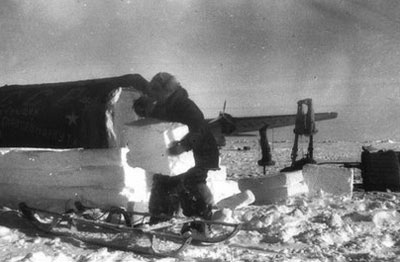

After a month of the landing of members of the Papanin polar expedition (the courageous four was called so all over the world) on the block of ice, the formal meeting of participants of the first in the world air expedition at the North Pole took place in the Kremlin, a decree was read on the awarding of O.Y. Schmidt and I.D. Papanin as Heroes of the Soviet Union, other participants of the drifting were awarded the Lenin order.
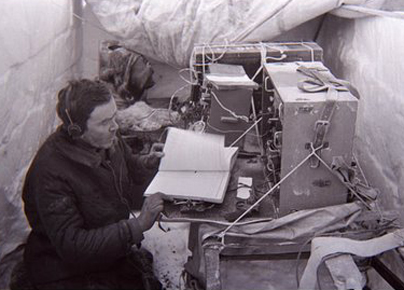
After 274 days the block of ice, on which the camp of the members of the Papanin polar expedition was located, turned into a fragment with a width of no more than 30 meters with several cracks.
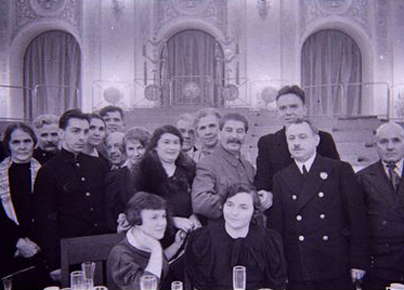

Yevgeny Fyodorov, Ivan Papanin,
1938
The decision was adopted to evacuate the expedition. Behind them was 2500 kilometers through the Arctic Ocean and Greenland Sea. On February 19th, 1938 the polar explorers were taken off the block of ice by the Taimyr and Murman icebreakers. On March 15th the polar explorers were taken to Leningrad.
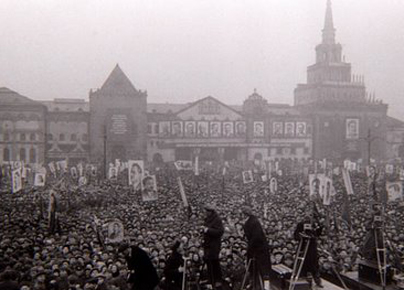
Scientific results obtained from this unique drifting, were presented to the General Meeting of the Academy of Science of the USSR on March 6th, 1938 and received the high appraisal of specialists. The scientific crew of the expedition was awarded academic degrees. Ivan Dmitrievich Papanin was awarded the degree of Doctor of geographic science.
The heroic drifting of the members of the Papanin polar expedition lead to the systematic exploration of the Arctic basin, that made regular navigation of the North water way.
Despite all the tremendous obstacles and hardships, the members of the Papanin polar expedition by their own courage included one of the most striking pages in the history of Arctic exploration.
